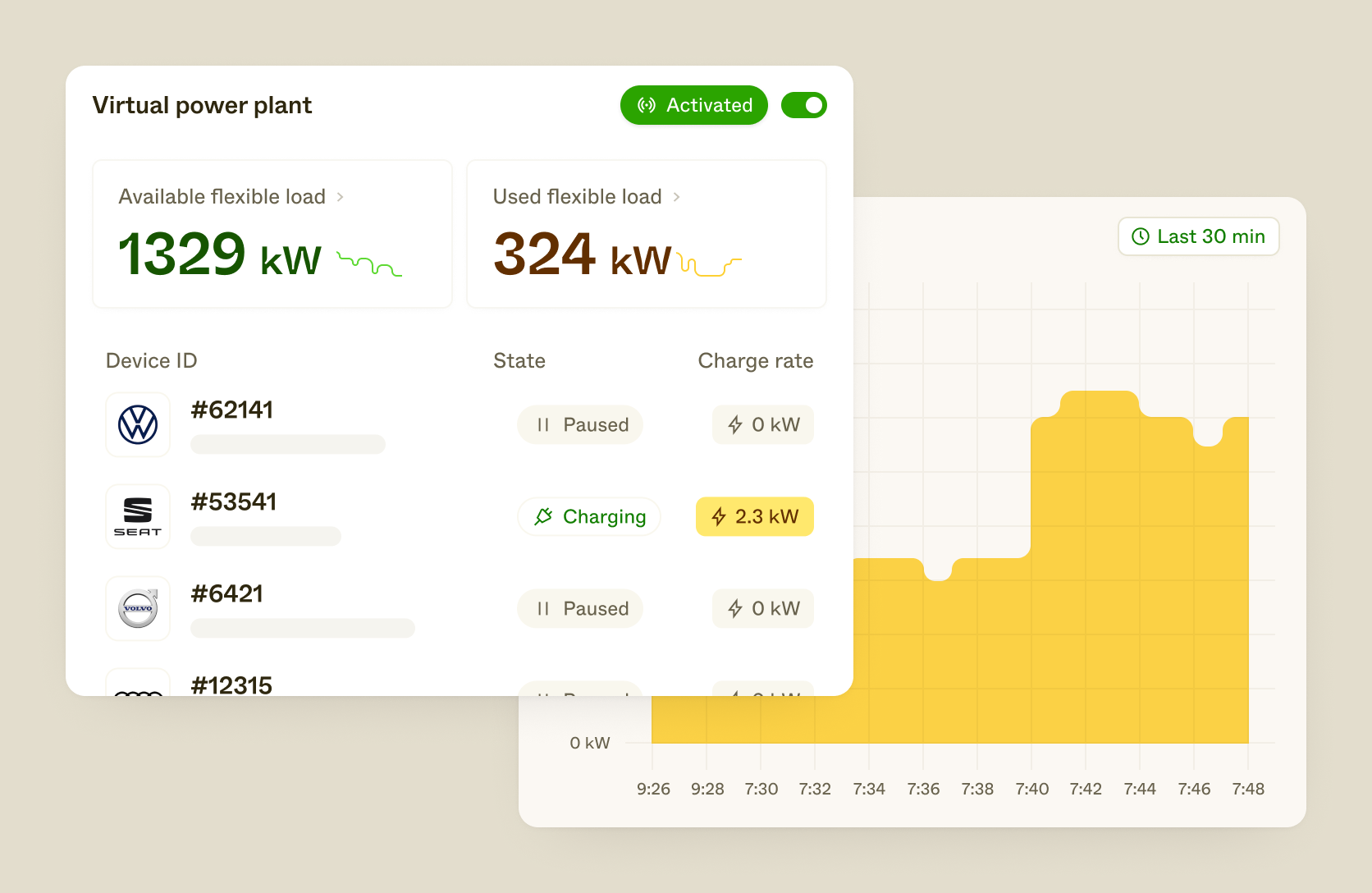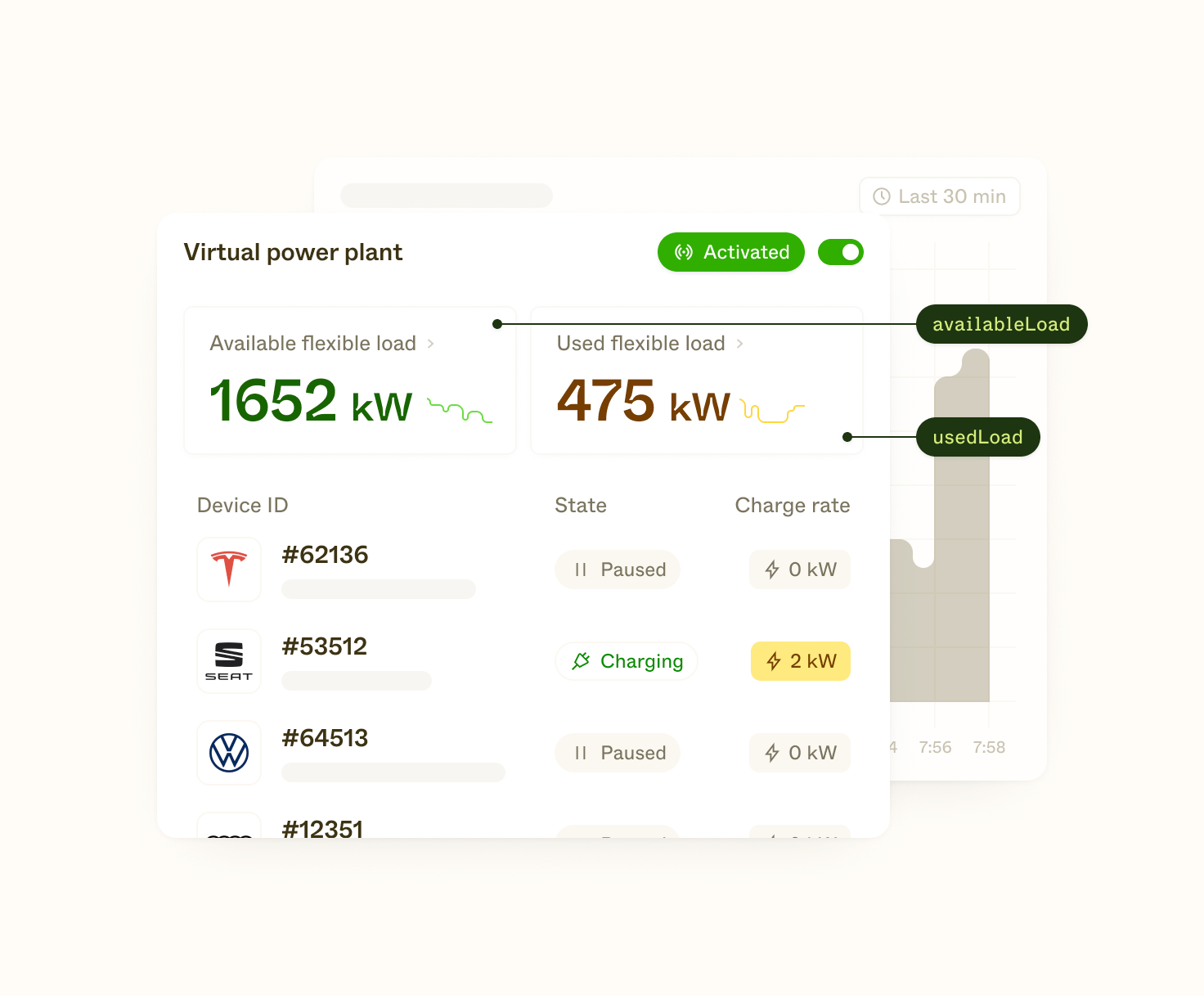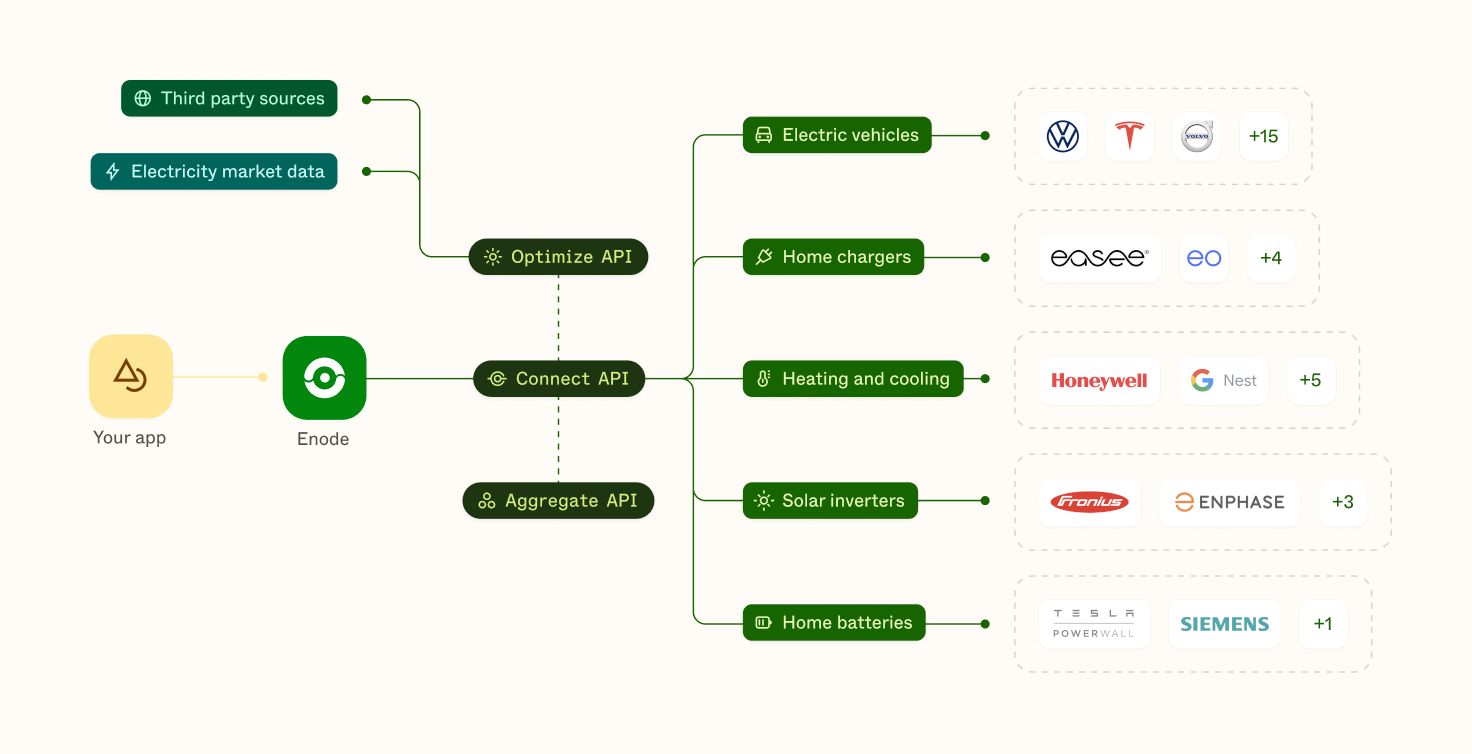The complete guide to Virtual Power Plant (VPP) software

Before diving into the technical nuances of virtual power plant software, let's look at the overarching need for this type of technology.
As you know, our sustainable energy future depends on full electrification and renewable energy supply. The electrification leads to a large increase in the demand for electricity as electric vehicles take over the roads and heat pumps are installed in every new home. New energy supply from wind and solar on the other hand is highly intermittent, making it more difficult to deliver consistently on the energy peaks produced by electrification.
The good news is that this is also an opportunity to activate all of the new energy hardware as part of the solution, via demand response. This helps balance energy supply and demand, making it possible to transition to a zero-carbon energy system without building out the grid for the highest peak loads. It will also increase the mix of renewable energy, so a clear win-win!
To be part of the demand response market you need to control a large energy load. This can be done either by owning a very large energy asset, like an industrial facility, or by doing something even more interesting - building and maintaining a virtual power plant (VPP). With this opportunity comes the need for virtual power plant software that can manage all parts of this process, and also scale with the organization and your energy assets.
In this guide, we will give you a full overview of the virtual power plant software landscape, from what it is to how you can benefit from it and what to look for in a provider.
More specifically we will cover:
- What is Virtual Power Plant (VPP) software
- The best virtual power plant software providers
- How to evaluate virtual power plant software providers
- What is the next step on your virtual power plant software journey?
What is Virtual Power Plant (VPP) software
Virtual Power Plant (VPP) software connects to all your different energy assets and bundles them together as one entity. This energy entity can then be connected to flexibility markets in order to balance the grid or increase the mix of renewable energy. VPP software can be used on DERs such as electric vehicles, thermostats, and more.
Virtual power plant software can also vary in many ways, depending on the use case and underlying energy asset. Common for all of them is the objective of bundling together energy assets as one entity, to make them ready for connecting to the local or national demand response market. This process includes connecting to and controlling hardware, as well as aggregation and forecasting for the entire subset of energy hardware the VPP consists of.
When evaluating demand response software, many energy companies and utilities are themselves responsible for parts of the tech stack. This makes it more beneficial to get a specialized solution in place for the missing parts - usually the virtual power plant creation and control. This makes VPP software beneficial both for companies looking for a holistic DR software platform, as well as those looking for a specialized VPP tool.

The objective: More renewable energy and a stable grid
Common for all virtual power plant software is utilizing energy hardware to balance the grid and make better use of renewable energy. The differences between different vendors, that we will look at in a minute, is still huge. Some are focused on C&I while others are build for residential DERs. Some can handle different hardware categories while others are specialized in EVs. These differences are something you need to consider when evaluation providers, based on the set of energy assets you want to utilize.
The full VPP software stack
Looking at the residential DER category, where VPPs are really on the rise, the software can in general be split into three different parts.
1 — DER connection and control
All virtual power plant software needs to be able to connect to and control some set of Distributed Energy Resources (DERs), whether that be ACs, thermostats, heat pumps, EVs, or other energy assets. As mentioned, some VPP software can handle them all, whereas others are more specialized.
If we consider the C&I implementations for a second, this usually involves a hardware device installed on-premise. This can make sense as the load is large enough to recoup the investment. For the residential use case, it is now possible to collect data from and control most DERs, like EVs and thermostats, via a cloud-to-cloud connection. This makes it easy to scale VPP software across a large set of consumers without any need for propriety devices installed in the house.
2 — Aggregation and Virtual Power Plant (VPP) generation
Once you have your DERs connected, the next thing the virtual power plant software needs to handle is aggregating them to increase the value. One residential thermostat is not enough to really create value from demand response. The real value comes from bundling thousands of them together and controlling them at the same time, which is a key part of any VPP software.
The objective is to analyze and determine the total available capacity for your VPP, that can be made available in the flexibility market. This will most likely fluctuate heavily thought the day and for different geographical areas, so a lot of virtual power plant software also uses machine learning to train the models for more accurate output.
3 — Activation and reporting
When steps 1 and 2 are complete you are ready for the most important step, the activation of your VPP. This is also handled by almost all VPP software we have analyzed, and basically means that you send e.g. a stop charing signal to ten thousand EVs at the same time.
This might sound simple, but many of the EVs, in this case, will not necessarily respond as you intend. This lack of response and activation needs to be part of your model, so you can accurately predict what flexibility you have available at all times.
When the activation is complete the final step is to report on the flexibility delivered. This is sometimes handled by the VPP software, but in a few cases also the overarching DR software platform or a DERMS.
Access to Distributed Energy Resources (DERs)
One question we often hear is where most energy companies and utilities find Distributed Energy Resources to bundle as VPPs. For the residential space, in our experience, the most viable way forward is to create a consumer-facing app that lets the user connect their own DERs to your virtual power plant software. This can be done via Electric vehicle APIs, Solar panel Inverter APIs, Heat pump APIs, Smart thermostat APIs, EV charger APIs and more.
The best virtual power plant software providers
So now that we have covered what the virtual power plant software is, let's turn our attention to the different providers out there. In this case, we have focused mainly on the US, as this is a mature demand response market with a large need for VPPs in the years ahead.
AutoGrid
AutoGrid is one of the most experienced players in the US VPP market. They cover C&I and residential use cases across a broad range of DERs: EVs, solar, battery storage and more. They also have a complete demand response offering to build on top of the VPP software they provide.
You can read more about their offerings here.
Evergen
Based out of Australia, Evergen is another experienced VPP software provider. They have a broad product range, including trading, API management, Battery commissioning and of course full VPP management. If you are interested in virtual power plant software they also have an interesting video on their website that explains exacly what this is.
You can read more about their offerings here.
Next - NEMOCS
As the operator of one of the world’s largest Virtual Power Plants (VPP) and as an expert in renewable energy trading, Next can offer you a customizable VPP as a service solution for building your own VPP. This includes load management, curtailment, dispatch and energy trading. The company is headquartered in Germany but delivers VPP services in many different countries around the world.
You can read more about their offerings here.
Enode
Having worked on connections to DERs for several years now, we at Enode have entered into the virtual power plant software market with a more specialized product. Our Aggregate product creates a VPP from all your connected DERs, making it ready for value capture in the demand response market.
You can read more about our Virtual Power Plant Software here.

How to evaluate virtual power plant software providers
Before you move forward with VPP provider of choice there are some things that are worth considering as part of the decision process. We have seen companies across industries make this choice and these are our learning.
Holistic or specialized
Not all DERs are created equal. Some are easier to work with and others and therefore many VPP companies have chosen to specialize on just one asset. If you have a large fleet of EVs, it would make sense to choose a provider with an e-mobility focus. On the other hand, should you want to expand to EV chargers or home batteries, that switch might cause you to need several vendors. Not ideal.
Based on the energy asset you have available and the knowledge and expertise your team possesses, it is good to assess whether you want to procure a holistic virtual power plant software solution or build something more custom with specialized tools. You can also go the route of choosing a complete demand response software provider, or a traditional DERMS based on your needs.
C&I or Residential
The next consideration to make is whether you want software that focuses on C&I vs residential DERs that your VPP will consist of. Many of the VPP software providers have specialized in one direction for 5-10 years, making them excel in one category over another.
Price and revenue share
And of course we cannot overlook the price, which can vary a lot between the VPP vendors. Some virtual power plant software providers are just that, software providers, with little extra hands-on support. Others are closer to consultancies, with integrations projects and continuous tech support along the way. Based on your internal knowledge and expertise you can assess what suits you best.
What is the next step on your virtual power plant software journey?
To learn more about Virtual Power Plant (VPP) software we recommend talking to other experts in the industry. Some of the companies mentioned in this article will be able to add even more context before you decide. Talk to all of them and see what they have to offer.
If you want to learn more about VPP and the opportunities in the space, here are some additional resources:
- A full guide to Virtual Power plants
- A full guide to demand response software, a logical next step from VPPs
- This The Verge video on virtual power plants in cities.
